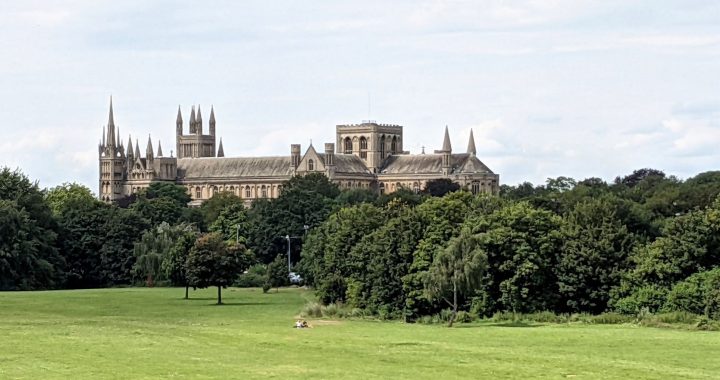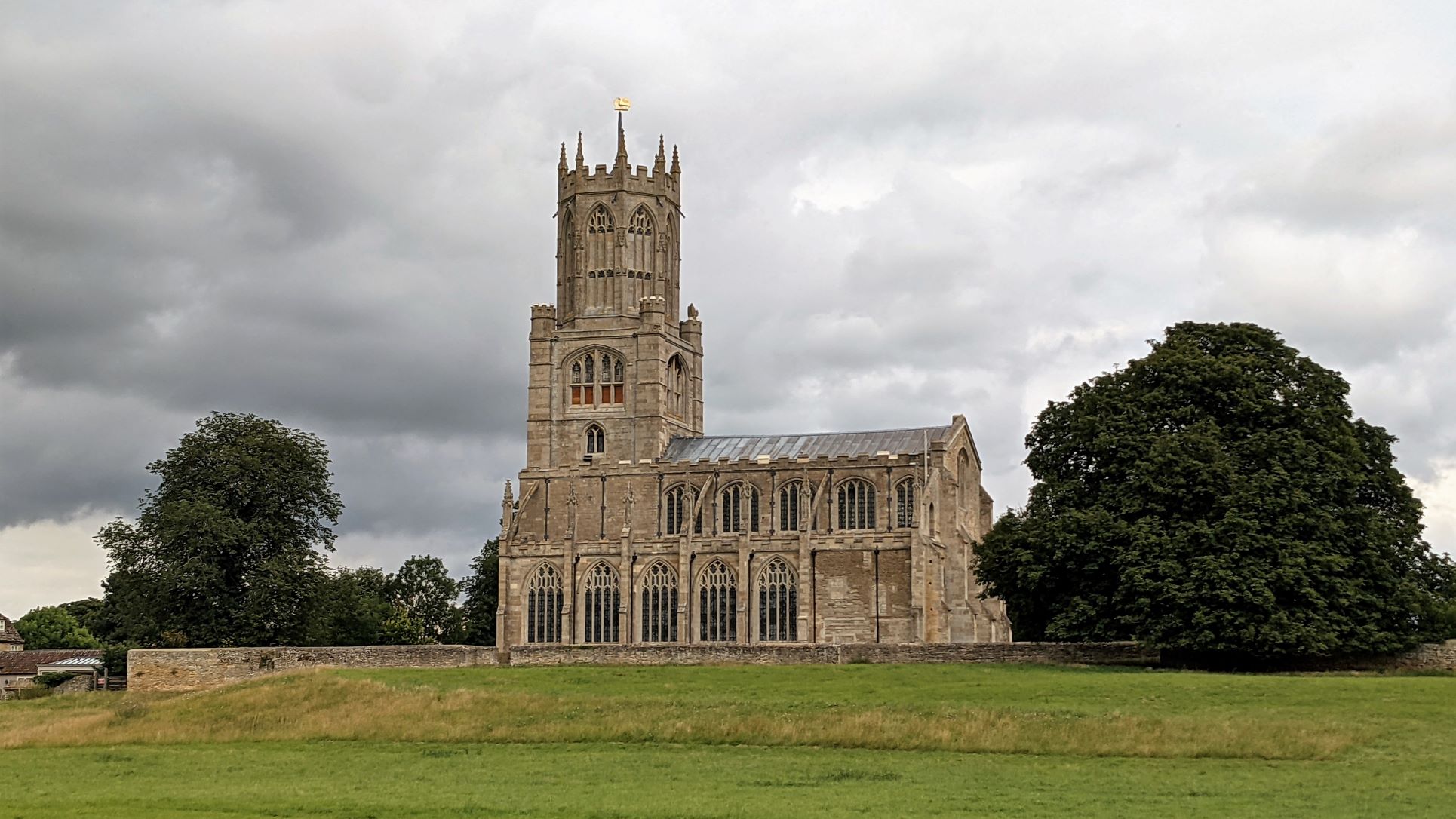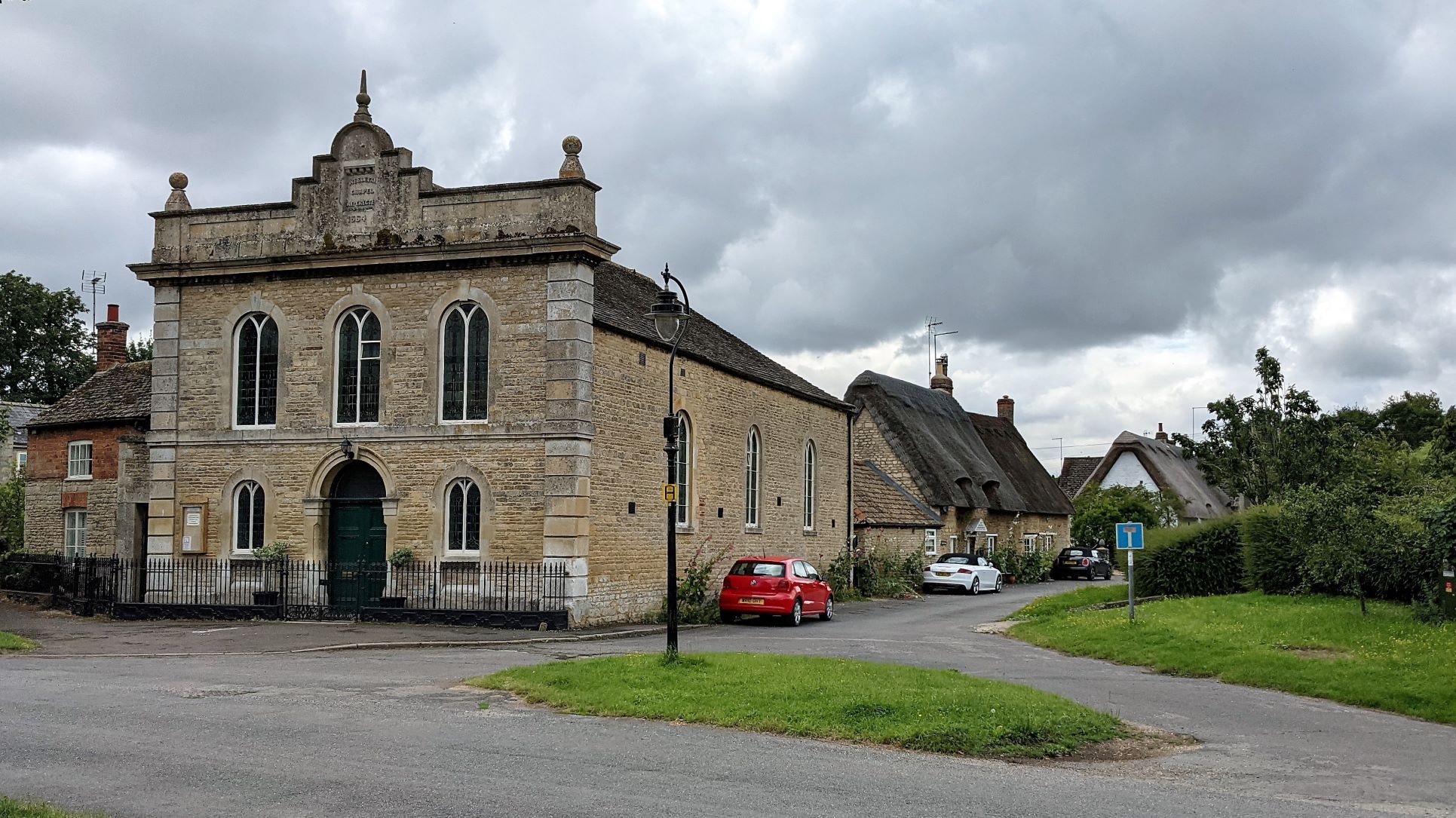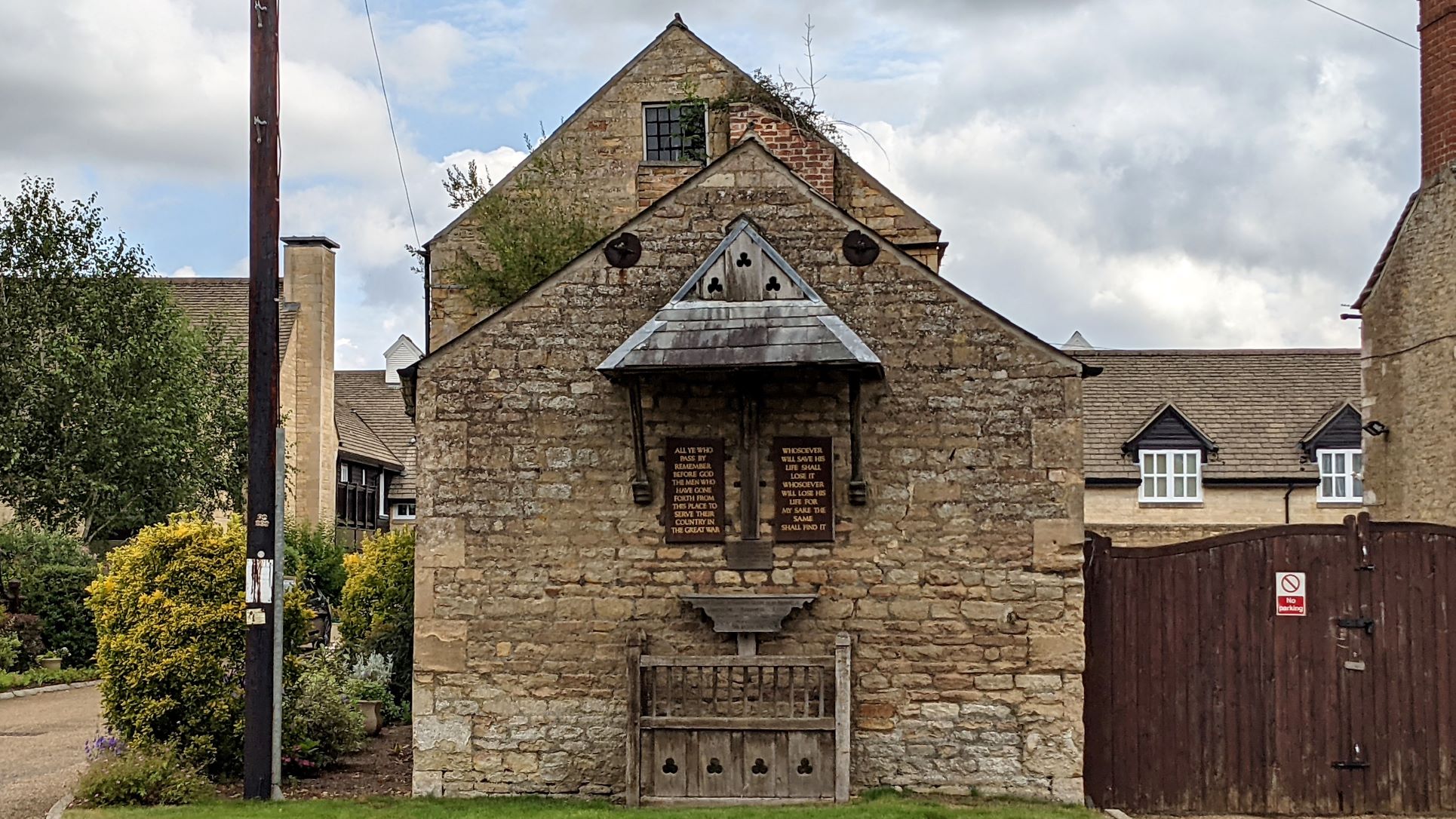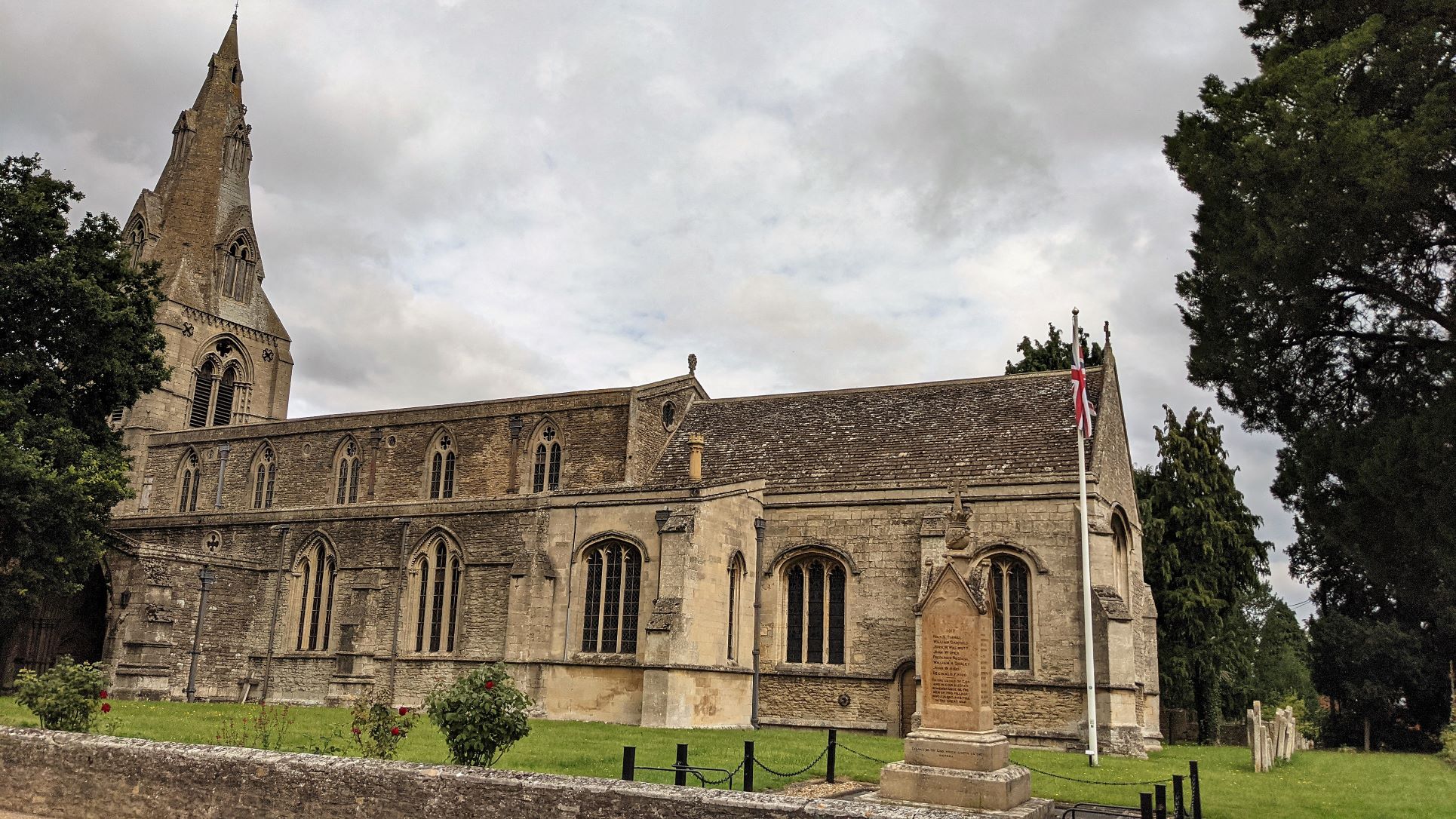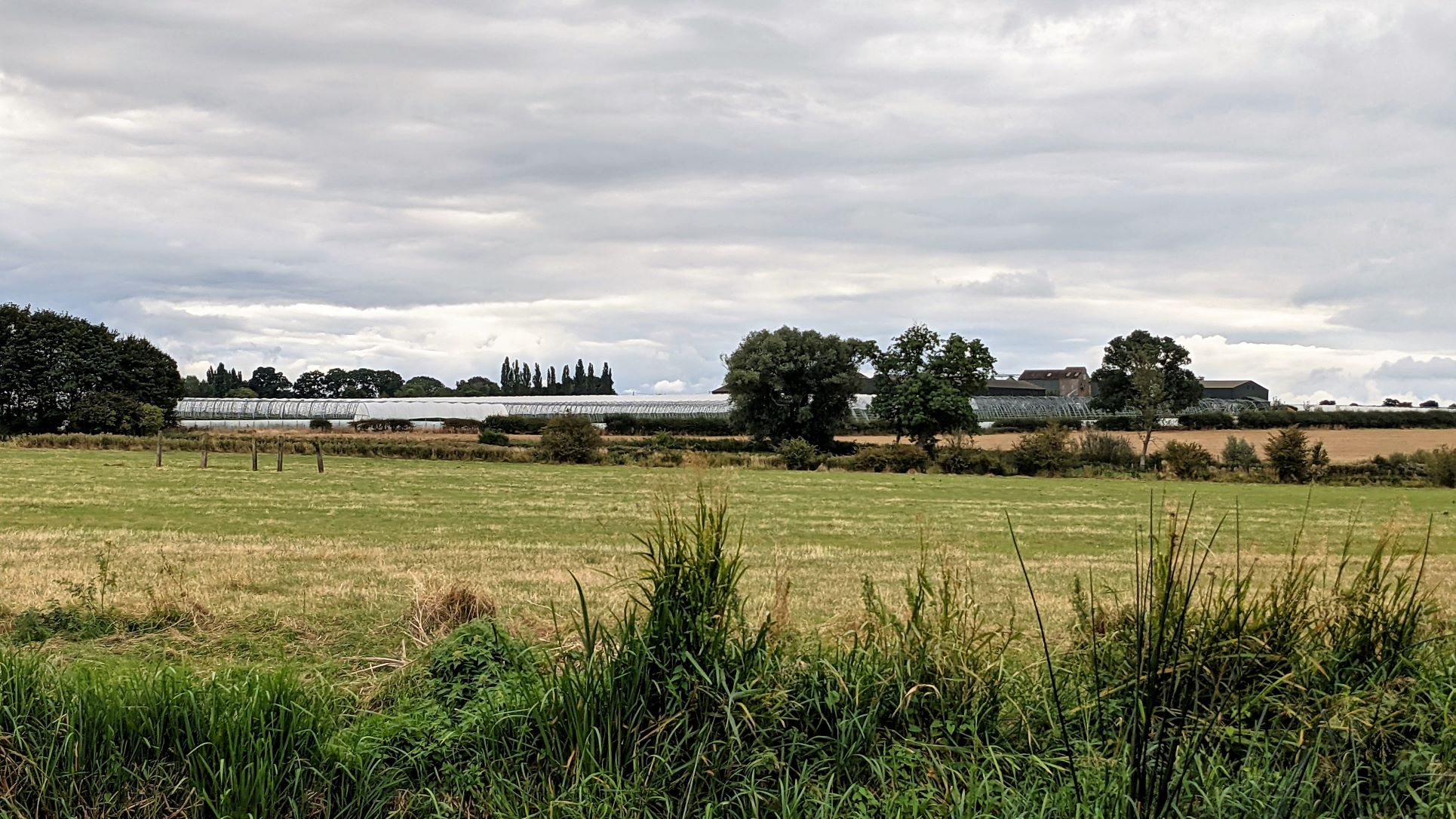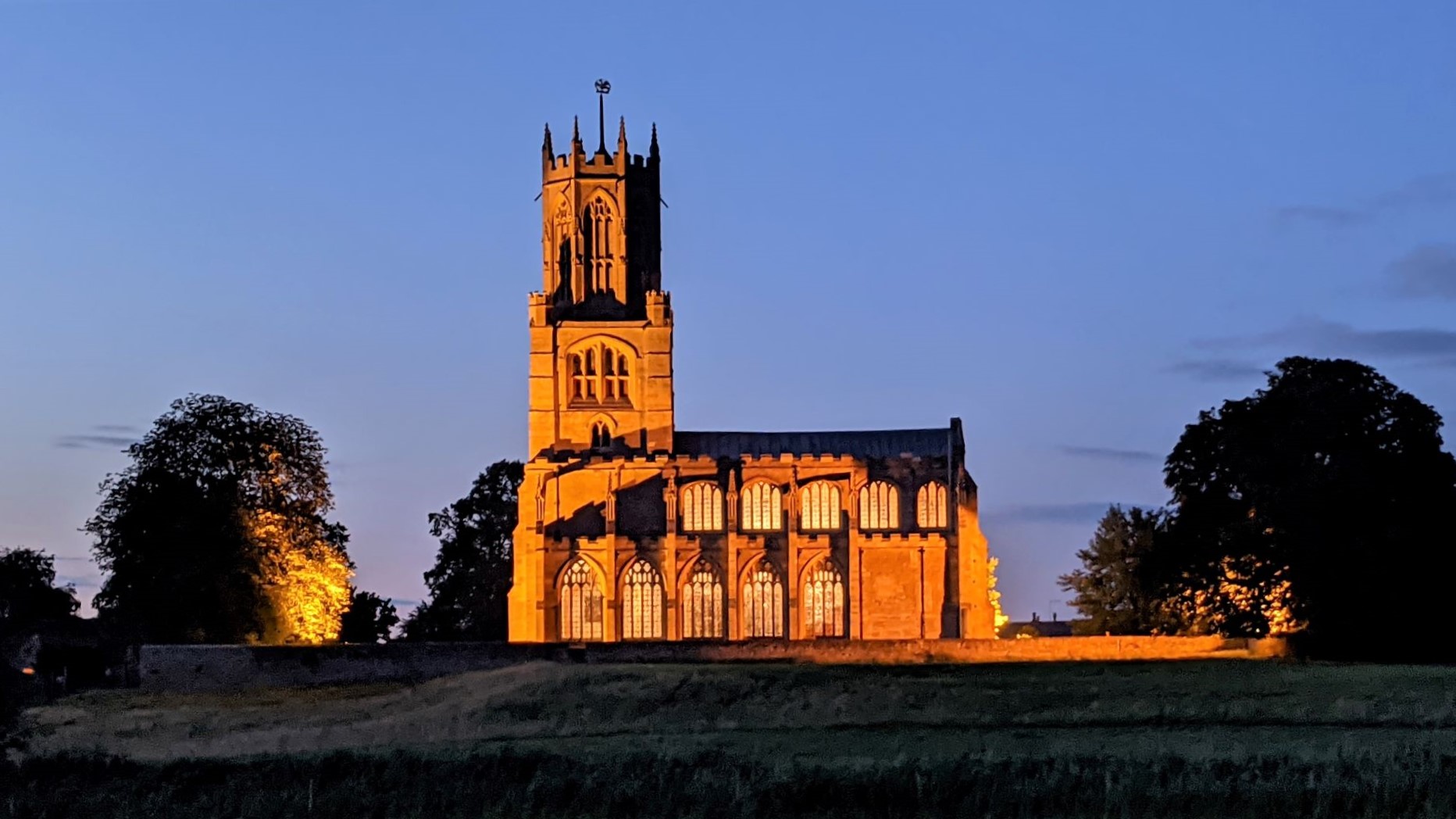Friday In Fotheringhay
The next morning was a strange mixture of hot & sunny, alternating with damp and windy. Leaving Oundle we were heading for Fotheringhay Bridge, just a couple of hours and a couple of locks away. They were all working fine today, which was helpful, although the wind wasn't. We needed to get the top box off the roof as we had been warned that the bridge at Fotheringhay had very small arches. Rather than attempt this from an uneven river bank we decided to pull in to the lock landing at Cotterstock Lock and deal with it there, As Sue came out of the lock and tried to move over onto the landing the wind caught the boat and did its best to spin her around a hundred and eighty degrees. She managed to wrestle it back around but it meant coming on to the landing through the trees, which the EA seem to encourage to grow in front of many of the lock landings, blocking the view and making every approach unnecessarily difficult.
Fotheringhay Bridge is, unsurprisingly, close by Fotheringhay Castle. Now a robbed-out ruin, this was where Richard III was born and where Mary, Queen of Scots', spent her final days. Mary's trial, in which she was convicted of treason, and her execution both took place in the Great Hall, although the two events were several months apart. It is surprising that a place that had been of such importance should then have fallen into ruins and been demolished less than fifty years later.
The land on either side of the bridge, on the left bank, is owned by Castle Farm. Part of their diversification strategy is to run a camping and caravanning site behind the castle mound and to allow mooring along their river banks, for the princely sum of £5 a night. We had learned our lesson and phoned ahead to check the facts but it turned out to be all true. In principle, apart from the mooring, they don't offer any other facilities for boaters. However, when pressed, they conceded that we could use the Elsan disposal on the camp site if we wanted to and there happens to be an EA water point just on the upstream side of the bridge.
We hadn't been quite sure which side of the bridge we would end up mooring, hence removing the top box. In the event, that exercise had been entirely futile as we ended up mooring upstream of the bridge and now needed to get the top box out of our bedroom and back on the roof! We had barely tied up and put in the second mooring pin when I saw a figure approaching clutching an old biscuit tin. Sure enough this was the Castle Farm proprietor, here to collect his fee. My goodness, he was sharp off the blocks! The windows of his farmhouse overlook the mooring site on this side and he must spend his day peering out on the lookout for potential revenue.
Moored where we were we had a fantastic view of Fotheringhay church, a magnificent edifice, hugely disproportionate to the size of its congregation, although perhaps not to the importance and status of its patron when it was actually erected.
The church was a few doors down from The Falcon Inn. This being our wedding anniversary I had tried to book a table there for dinner that evening. Sadly, they were taking no bookings for that day, having let the whole place out for a private wedding reception. I did book a table for the Saturday night, which was one of the reasons we had forked out £10 for two nights' mooring. No expense spared for such an important occasion, which I had even managed to remember!
Heavier rain set in for the afternoon and evening but we had a Zoom meeting scheduled with a couple of friends and we took the opportunity to book our passage through Stanground Lock onto the Middle levels and subsequent departure onto the Great Ouse via Salter's Lode for a few days later.
Elton
Saturday started grey and a bit wet but settled down to be just cloudy with spells of sunshine and much less wind than the day before. We had a long walk around Fotheringhay and across the river to Elton and Warmington. Elton, in particular, was immaculate. All the land around appears to be owned and managed by the Elton Hall estate and they seem to have an iron grip on everything in and around the village.
It is so tidy it feels almost like the village in The Prisoner and I have a sneaking suspicion that we met Number Two. As we were looking over the family's war memorial, opposite the church, we were approached by one of the residents who told us a bit about it. I'm sure, as he walked away, I heard him say: "Be seeing you."
Warmington, not to be confused with Walmington-On-Sea, was much more developed around the edges in different styles and phases but the centre was certainly tidy and traditional enough.
Our route into the village took us past the soft fruit polytunnels of one farm and it was striking to see the sheer scale of one industrial polytunnel and then see them laid out in rows of twenty or more at a time.
That evening we finally did have a nice meal at The Falcon. The service was reasonable but it was a very expensive and pretentious menu for what was still just a village pub. To get to the pub the route was through the long grass of the river bank, over a nettle-infested stile, then a final scramble over a drystone wall onto a road that we could then follow into the village. It was easy enough on the way there. It was a little trickier coming back in the dark but the lighting display on the church was very impressive.
Farewell To Fotheringhay
Sunday morning was busy. Sue did a load of washing first, to make sure we didn't immediately use up the water we were just about to fill the tank with. We also had to, once more, take down the top box and store it inside. Before we could then move down to the water point at the bridge we saw a boat approaching through the main arch. It seemed to be stuck there for a while so I went to have a look and see if they needed any help.
"Sophia" was a 70' narrowboat with a big butty called " Mister Ben" in tow. "Sophia" had almost made it through but "Mister Ben" had caught on the far side of the bridge. There was a bloke on the bow of the boat trying to push them out of the reeds and a long suffering lady at the tiller. The language was really quite unsuitable for a Sunday morning and their exchanges made "discussions" between Sue and I, in similar circumstances, seem like a model of courteous communication and polite collaboration.
He kept insisting that she apply full power to drive them through. She could see that the corner of the butty was caught on the arch of the bridge. That bridge had been there for centuries and no amount of shoving was going to move it. Sadly, she couldn't get him to listen to this intelligence.
I did take his barge pole, to try and push their bow round but it didn't do much good. After another lengthy session of anger and foul language he finally listened to her suggestion that they loosen the ropes tethering the butty and give their ensemble more flexibility. It worked a treat. The boat was able to proceed, the butty was able to move around the geometry and the whole lot came through the bridge, with me lowering the barge pole down to them from the centre span as they went through. Great entertainment!
With the way clear we could move down to the water point, which sits tight under the bridge on the left bank. Once you have finished there you need to somehow get right back and across to pass through the largest arch of the bridge, which itself is only just over two metres high. The extra complication is a strong current pushing the boat over to the left as you try to pass through the arch. Sure enough, while we cleared the masonry, we ended up in the clutch of the willow trees beyond, fighting to get back out again without being able to see where we were headed. Emerging into the light, at last, we were able to tie up again and go in search of the sanitary station associated with the Castle Farm campsite. Following a narrow, winding and heavily overgrown path leading to a stile beyond which was the camping field, this turned out to be a dustbin set into a hole in the ground, presumably with some sort of septic tank arrangement below it. A dedicated water tap, separate from the drinking water supply was provided too, only it was about thirty metres away on the other side of the field, really quite a rudimentary set-up.
All Aboard For Wansford Station
Having finally completed our chores and got on our way we already felt as though we had had quite a full day. Having now passed through the bridge, we stopped at the Warmington Lock landing to get the top box back out again. The firm, flat jetty, set at a sensible height, made it a lot easier here than on the high, rough and uneven river bank we had just left. Thankfully, the rest of our journey that day proved quite uneventful, if a little damp at times.
Our destination for the night was an EA mooring by Wansford Station, somewhat confusingly located at Stibbington, over two miles from Wansford. There we found a nice, secure site, with a floating pontoon, just under the railway bridge and we had tied up there by half past three. It only really occurred to us that Wansford Station was an active part of the Nene Valley Railway line when the last train of the day came steaming in, right over our heads, about ten minutes later. It was quite a sight.
Passage To Peterborough
The final leg of the Nene, for us, would take us down to the Embankment at Peterborough, "Gateway To The Fens". It was a nice sunny day, if a bit colder to start off, so quite a pleasant cruise over nine miles, through three locks, in three hours to moor up in the city by lunchtime. The river approaches Peterborough past the yacht club before dropping down through Orton Lock, beside a canoe slalom course below the adjacent sluice. The wooded countryside shows increasing signs of decrepit cruisers tied up in little encampments the further you get towards the centre. As you go under a series of bridges you are passing the city centre up on the left bank, although there is plenty of built up commercial estate on the opposite side too.
Just beyond the Town Bridge, which leads up to the city centre, there is a recreation ground. An old grain barge, converted to a floating Chinese restaurant and imaginatively called "The Grain Barge", is moored at the start of the embankment that runs alongside the recreation ground. You seem to be able to moor almost anywhere along this embankment, on which rings and bollards are provided. Half way along there is a water point and pump-out, with other services nearby.
One thing Peterborough is famous for is Perkins Engines, a major employer in the area from the 1930's when Frank Perkins set up a new business to create the high-speed diesel. At that time the diesel engine was a heavy and slow revving workhorse, lacking performance and only thought suitable for agriculture and heavy construction. Perkins aimed to develop an engine that could challenge gasoline as the primary motive power in road vehicles and went on to ship them all over the world. The far end of the Recreation Ground is bounded by the Frank Perkins Parkway, a fast dual carriageway that crosses the river on an imposing, tall viaduct.
We think that mooring here is restricted to forty-eight hours and managed by the EA. However we saw no signs to say so and there seemed to be little interest in what goes on there. Our impression is that there is a community of boaters who have been accustomed to gather beyond Frank Perkins Parkway, where there seems to be space to moor and very little scrutiny. It seemed to us that this element was starting to move further up onto the embankment, almost as though waiting to see if someone would take an interest and challenge them. While we were there it was fairly easy to find a space and it wasn't that uncomfortable. I suspect that, left unchecked, this trend may continue and in a couple of years you will be unable to find a mooring and if you do it will not be a pleasant environment to stay in.
We only stayed for one night but gained the benefit of a long chat with "Trade Winds II", who had just completed the journey we were embarking on. They had been stuck in Peterborough waiting for Wadenhoe Lock to re-open and were able to give us some useful tips about the trip, including strong recommendations for the fish & chip shop in March and the Grain Barge takeaway.

